
Posts Tagged: Verbena
Victory in the Verbena
Yes, I'm hungry. A female praying mantis is perched upside down in our pollinator garden. She has maintained this position in the verbena over a four-day period, enduring temperatures that soar to 105 degrees. The mantis, a Stagmomantis limbata (as identified by praying mantis expert...
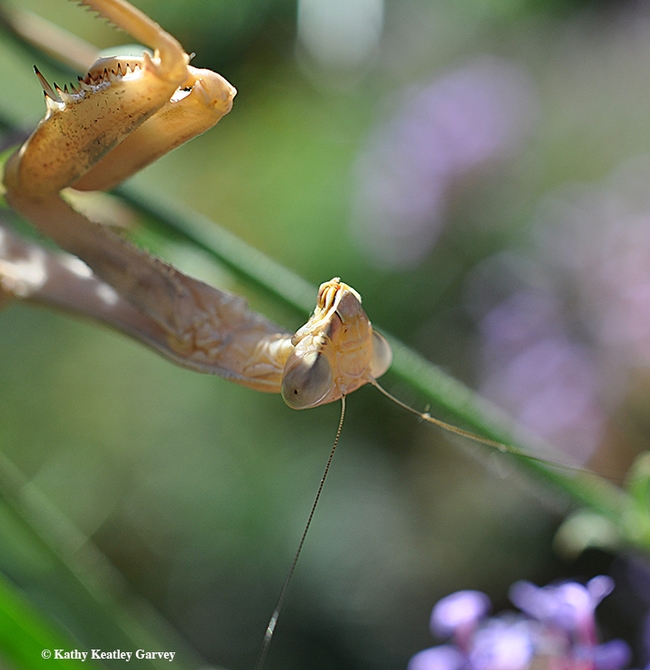
A female praying mantis, a Stagmomantis limbata (as identified by Lohit Garikipati of UC Davis) is looking for prey. (Photo by Kathy Keatley Garvey)
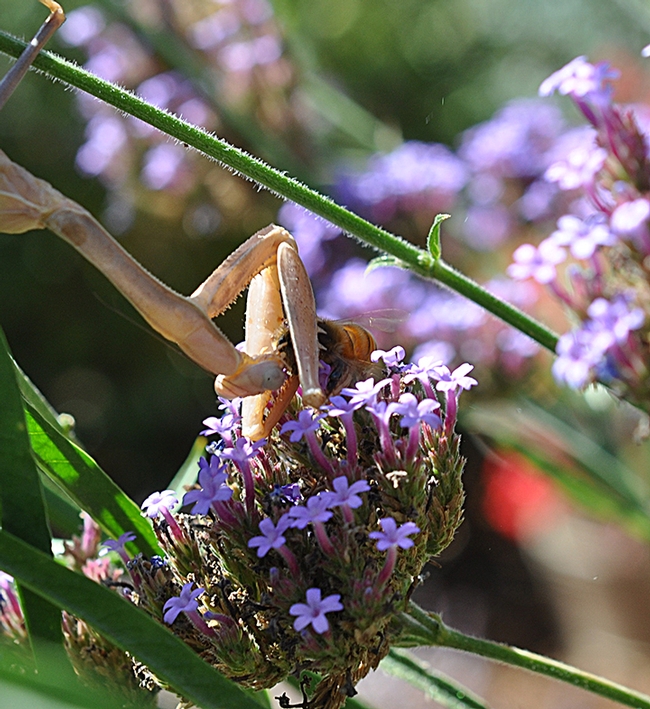
Seconds later, the praying mantis nails a honey bee. (Photo by Kathy Keatley Garvey)
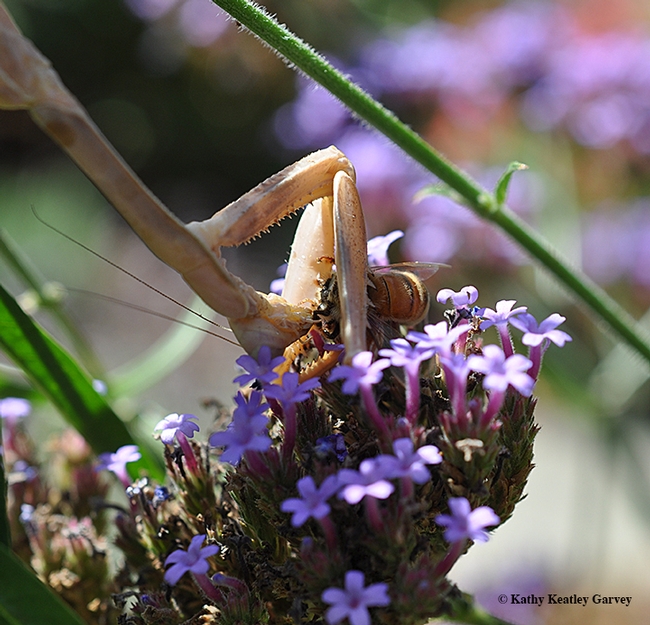
The praying mantis, Stagmomantis limbata, begins to eat. (Photo by Kathy Keatley Garvey)
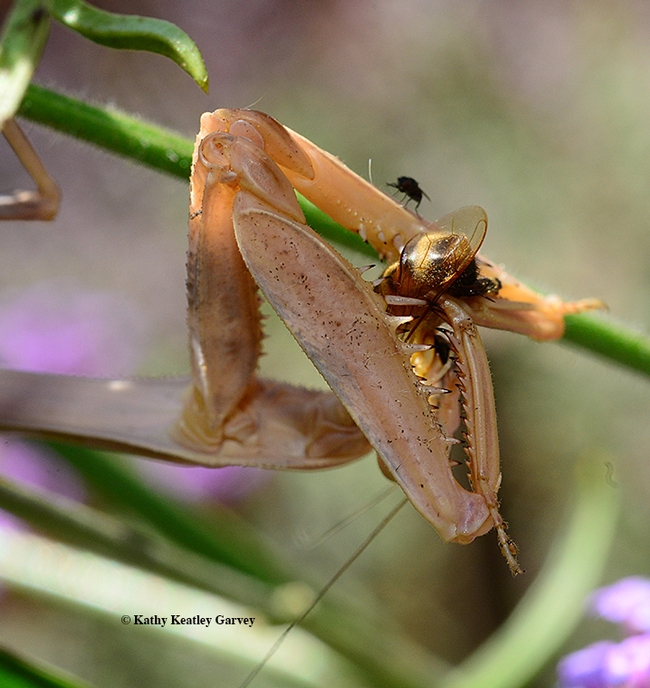
A freeloader fly, (family Milichiidae and probably genus Desmometopa) perches on a spiked foreleg. (Photo by Kathy Keatley Garvey)
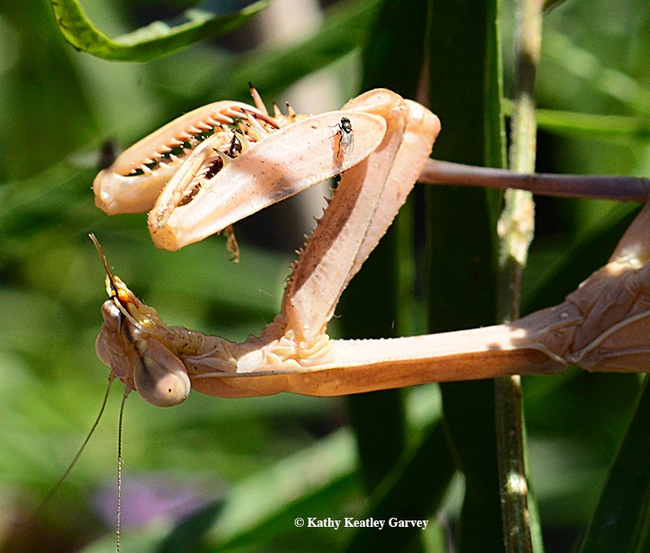
The praying mantis eats the last of her prey, while the freeloader fly is out of luck. (Photo by Kathy Keatley Garvey)
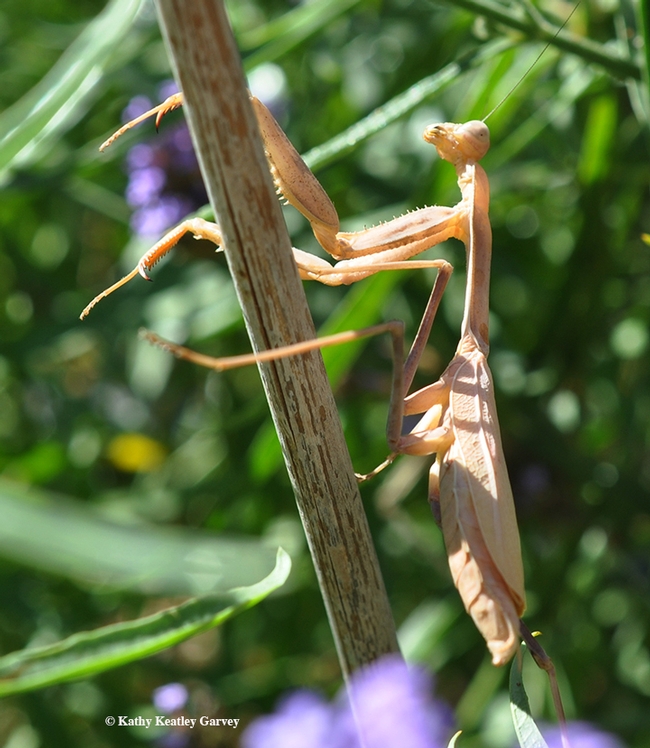
All gone and done. The praying mantis is finished with her meal. (Photo by Kathy Keatley Garvey)
Welcome, Anise Swallowtail!
The Anise Swallowtail, Papilio zelicaon, fluttered into our pollinator garden and headed straight for the Verbena. Art Shapiro, distinguished professor of evolution and ecology at the University of California, Davis, identified the gender: "it's a girl." The Anise Swallowtail, our first sighting...
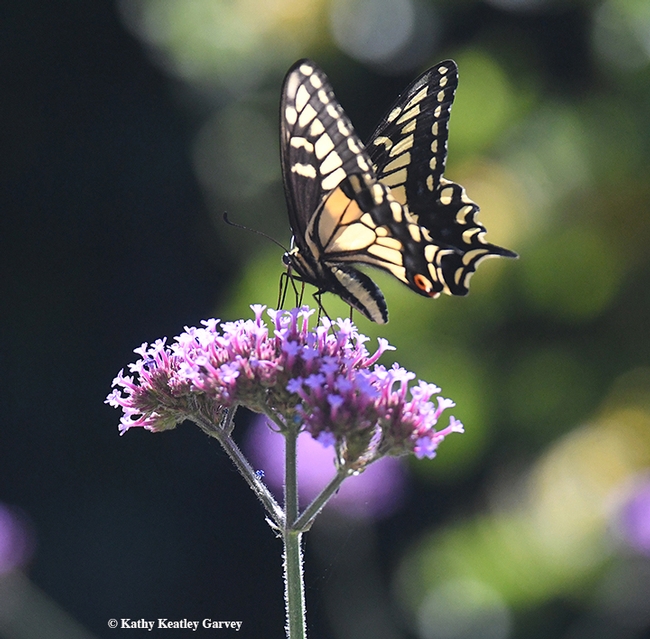
Anise Swallowtail Papilio zelicaon, nectaring on Verbena in Vacaville, Calif. (Photo by Kathy Keatley Garvey)
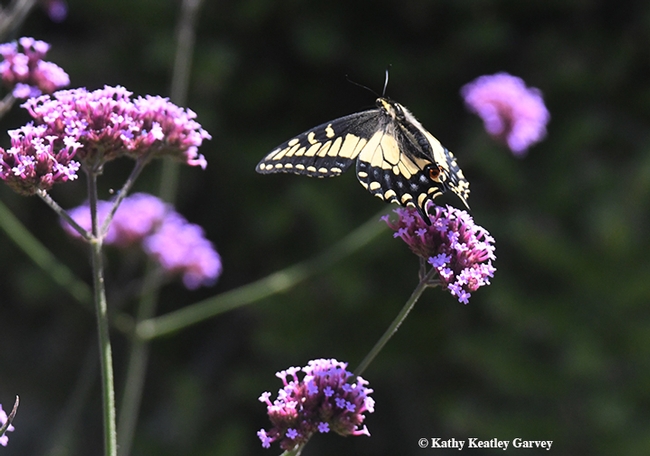
Butterfly ballet! Bees startled this Anise Swallowtail that was nectaring on Verbena. (Photo by Kathy Keatley Garvey)
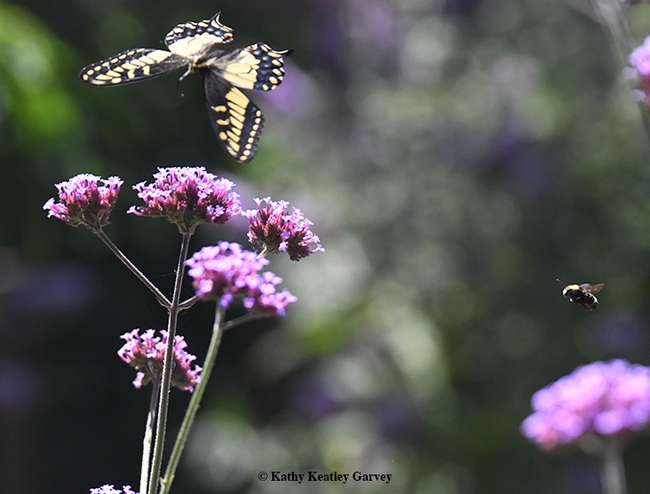
A yellow-faced bumble bee, Bombus vosnesenskii, heads for the same Verbena blossom occupied by the Anise Swallowtail. (Photo by Kathy Keatley Garvey)
They Hop and They Suck!
You've seen them. You've seen them hop. They're aptly named. Leafhoppers are tiny insects (family Cicadellidae) that suck nutrients from plants. But have you ever looked at them really closely? We spotted scores of mottled leafhoppers last week on our Salvia mellifera (black sage) and...
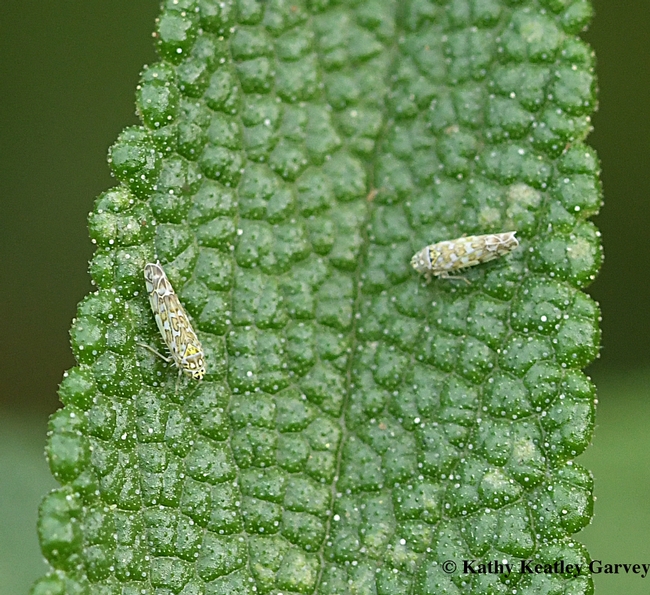
Two leafhoppers sharing a black sage leaf in Vacaville, Calif. They are Typhlocybinae leafhoppers, Eupteryx decemnotata, according to Robert Lord Zimlich of BugGuide.Net. (Photo by Kathy Keatley Garvey)
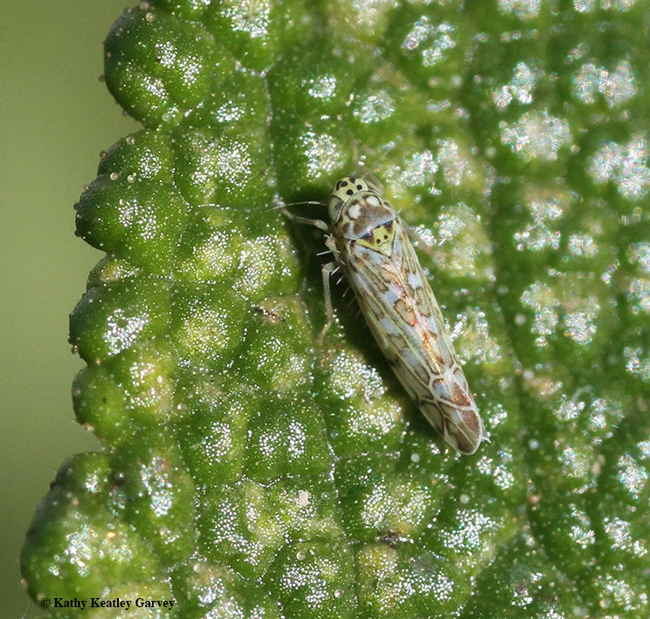
"Leafhoppers generally are varying shades of green, yellow, or brown, and often mottled," according to the UC Statewide Integrated Pest Management Program. This one is a Eupteryx decemnotata on black sage (Salvia mellifera) in Vacaville, Calif. (Photo by Kathy Keatley Garvey)
The Day the First Bumble Bee Arrived
When the monarchs return to southern California and central Mexico to overwinter, the residents rejoice. When the bumble bees emerge from their nests in the spring, we, too, rejoice. They are like the swallows of Capistrano and the monarchs of Pacific Grove. So, on Friday, April 29, a native...

Yellow-faced bumble bee (Bombus vosnesenskii), foraging on verbena. (Photo by Kathy Keatley Garvey)
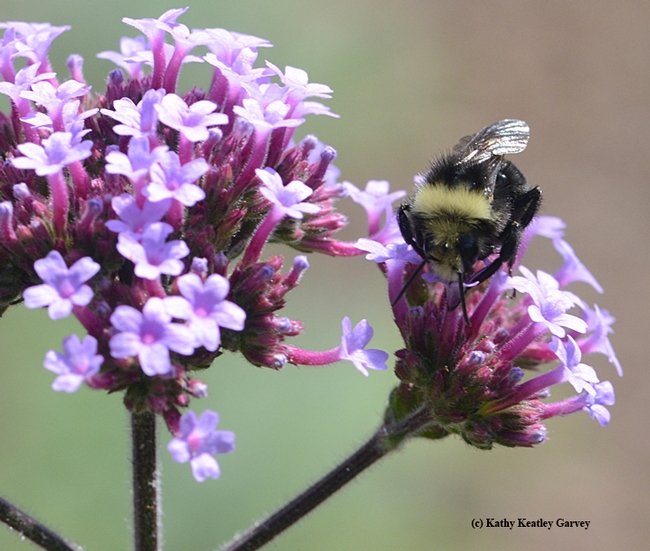
Its wings glistening, the yellow-faced bumble bee, Bombus vosnesenskii, sips nectar.(Photo by Kathy Keatley Garvey)
